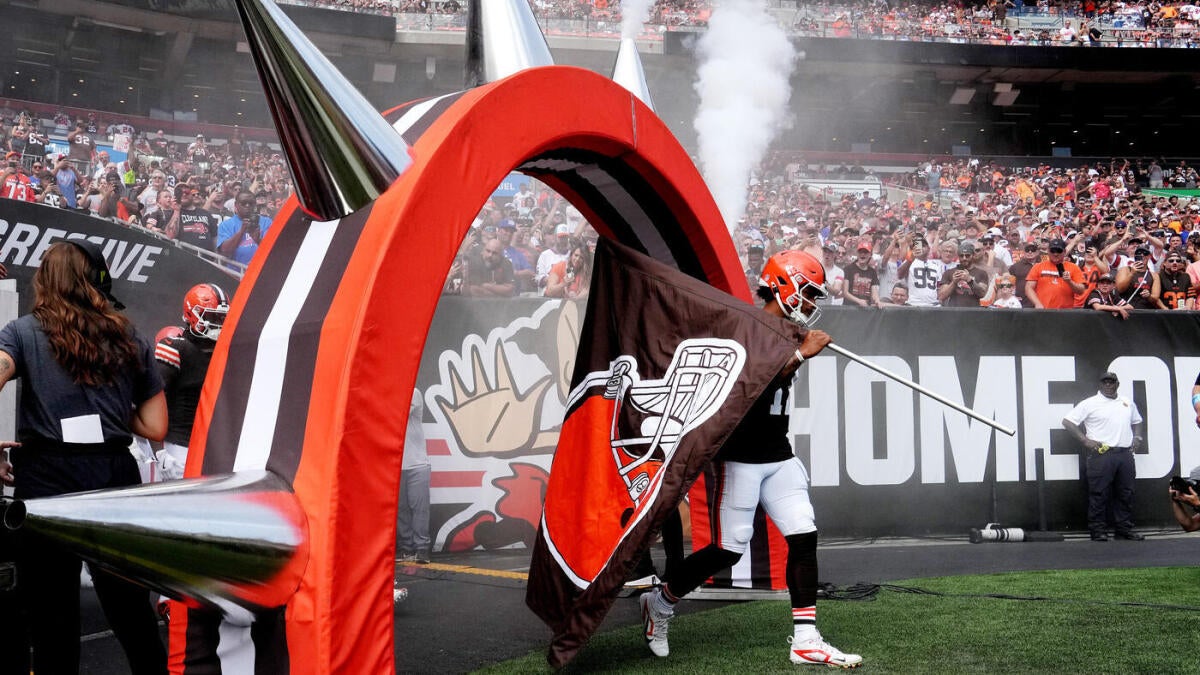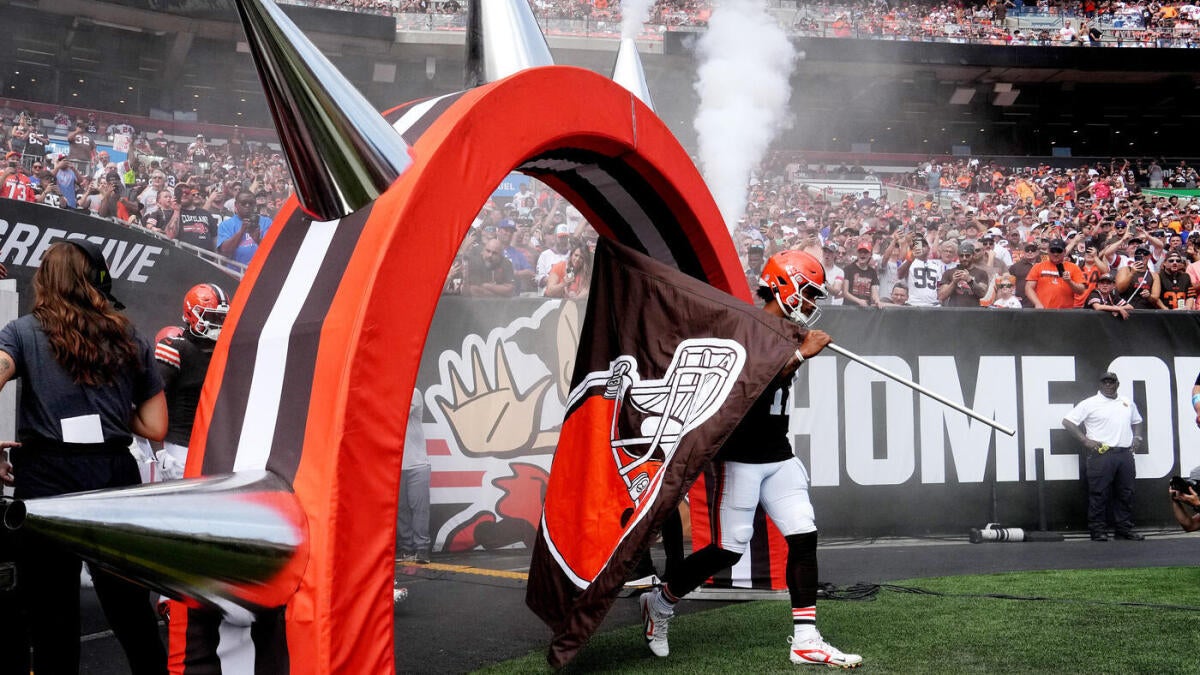The controversy surrounding Ohio’s plan to use unclaimed funds to partially finance a new stadium for the Cleveland Browns has ignited a fierce legal and political debate. At the heart of this dispute is a class-action lawsuit challenging the constitutionality of the state’s decision to allocate \$600 million from its Unclaimed Funds Trust to the Browns’ new stadium. This legal battle, led by former Ohio politicians and supported by concerns over property rights and government overreach, threatens to derail the stadium project and set a precedent for how states can utilize unclaimed funds.
Unclaimed funds, which include forgotten bank accounts, uncashed checks, and dormant stocks, represent a significant pool of assets held by the state. These funds legally belong to Ohio citizens, not the government. States typically hold these funds in trust, with the intention of reuniting them with their rightful owners. However, the allure of tapping into this seemingly dormant resource has led to increasing legislative interest, as evidenced by the Ohio legislature’s decision to divert \$1.7 billion in unclaimed funds, with \$600 million specifically earmarked for the Browns’ stadium.
The lawsuit argues that this diversion violates multiple provisions of the state and federal constitutions. Plaintiffs contend that using unclaimed funds for a private entity like the Browns constitutes a taking of private property for public use without just compensation, a clear violation of the Fifth Amendment. Furthermore, they assert that the state’s action infringes upon Ohioans’ property rights, effectively seizing assets that rightfully belong to them. The legal challenge highlights a fundamental question: Should unclaimed funds be considered a readily available source of revenue for state projects, or are they sacred assets that must be protected and returned to their owners?
The proposed stadium, envisioned as a state-of-the-art domed facility in Brook Park, represents a significant investment in the region’s sports and entertainment infrastructure. Proponents argue that the new stadium will generate economic benefits, create jobs, and enhance the quality of life for Ohio residents. They emphasize the potential for increased tourism, revenue generation, and community pride, framing the stadium as a catalyst for growth and development.
However, critics argue that these benefits are overstated and that the financial burden disproportionately falls on taxpayers. They question the wisdom of using public funds to subsidize a private enterprise, particularly when the team’s owner, Haslam Sports Group, is a wealthy entity capable of funding the project independently. Concerns have also been raised about the transparency and accountability of the stadium deal, with critics alleging that the process was rushed and lacked adequate public input.
The controversy surrounding the stadium funding is further amplified by the fact that other sports teams in Ohio, including the Cincinnati Bengals and FC Cincinnati, are vying for a share of the remaining \$400 million in unclaimed funds. This creates a competitive landscape, with each team seeking to secure public funding for their respective projects. The allocation of these funds raises questions of fairness and equity, as some argue that certain teams may receive preferential treatment based on political connections or economic influence.
The lawsuit against the stadium funding plan hinges on several key legal arguments. First, the plaintiffs argue that the state’s actions violate the Takings Clause of the Fifth Amendment, which prohibits the government from taking private property for public use without just compensation. They contend that using unclaimed funds for the Browns’ stadium constitutes a taking of private property, as the funds legally belong to Ohio citizens.
Second, the lawsuit alleges that the state’s plan infringes upon Ohioans’ property rights, violating the Due Process Clause of the Fourteenth Amendment. The plaintiffs argue that the state is effectively seizing assets that rightfully belong to its citizens without providing adequate notice or opportunity for recourse.
Third, the lawsuit challenges the state’s authority to divert unclaimed funds for purposes other than reuniting them with their owners. The plaintiffs argue that the state has a fiduciary duty to protect and preserve these funds, not to use them for unrelated projects. They contend that the state’s actions undermine the integrity of the Unclaimed Funds Trust and erode public trust in government.
The legal battle is expected to be protracted and complex, involving extensive discovery, expert testimony, and legal maneuvering. The outcome will have significant implications for the Browns’ stadium project, as well as for the future of unclaimed funds in Ohio and other states.
The lawsuit over the Browns’ stadium funding raises broader questions about the use of unclaimed funds by state governments. As states grapple with budget shortfalls and competing priorities, the temptation to tap into these seemingly dormant resources is likely to increase. However, such actions can have unintended consequences, undermining public trust, eroding property rights, and creating legal challenges.
Many states have laws in place designed to safeguard unclaimed funds and prioritize their return to rightful owners. These laws often require states to conduct outreach efforts to locate owners and provide clear procedures for claiming funds. However, these laws are not always effectively enforced, and states may face pressure to divert funds for other purposes.
The Ohio lawsuit serves as a cautionary tale, highlighting the potential pitfalls of using unclaimed funds for projects that are not directly related to their original purpose. It underscores the importance of transparency, accountability, and respect for property rights in the management of these funds.
The legal battle over the Browns’ stadium funding is far from over. The court will need to consider the plaintiffs’ arguments, the state’s defenses, and the potential impact of the lawsuit on the stadium project. The outcome could have significant implications for the Browns, the state of Ohio, and the future of unclaimed funds across the country.
If the court rules in favor of the plaintiffs, the stadium funding plan could be invalidated, forcing the Browns to seek alternative sources of financing. This could delay or even derail the project, potentially impacting the team’s future in Cleveland.
If the court rules in favor of the state, the stadium project could proceed as planned, but the decision could set a precedent for other states to use unclaimed funds for similar projects. This could lead to increased scrutiny of state governments’ management of unclaimed funds and potentially spark further legal challenges.
The lawsuit over the Browns’ stadium funding is more than just a legal dispute; it’s a battle over principles, values, and the role of government. At its heart lies the question of whether the state can unilaterally seize private property for its own purposes, even if that property is considered unclaimed. The outcome of this case will have lasting implications for Ohioans’ property rights, the future of unclaimed funds, and the balance of power between the government and its citizens. It serves as a reminder that even seemingly dormant assets are subject to protection, and that the government must act with transparency, accountability, and respect for the rights of its constituents.












